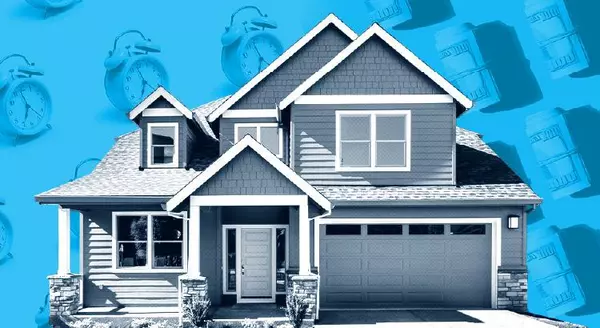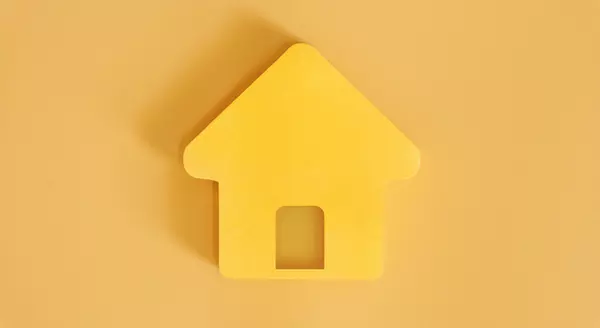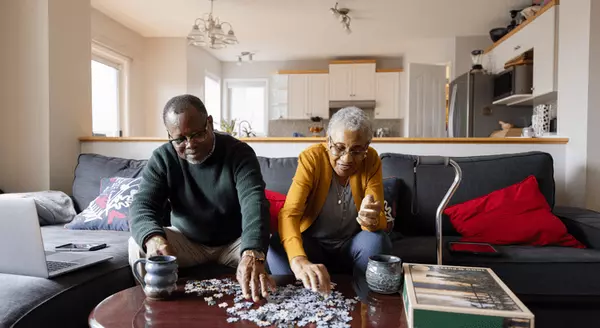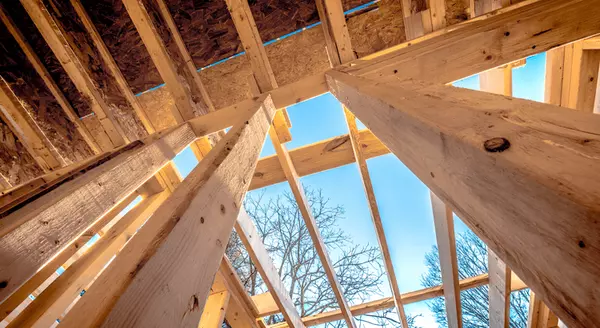
12 Common Home-Selling Mistakes: What You Should Know
You’re selling your home! It won’t be long before you’re trading the house keys for a sweet pile of money to fund your next great adventure. But a home is one of the most expensive items you’ll ever sell. Messing it up will make your stomach churn, and it’ll drop a bomb on your other financial goals. So protect yourself from common home-selling mistakes by knowing what to watch out for ahead of time. Here’s a list of 12 home-selling mistakes and how to avoid them. Mistake #1: Not Expecting Home-Selling Costs Okay, you’re selling a house and someone else is buying it. No need to prepare for any expenses, right? Big mistake! Don’t let these home-selling costs catch you by surprise: Agent commissions: Did you know sellers typically use their proceeds to cover the commissions for their listing agent and the buyer’s agent? According to most real estate websites, you’ll probably pay around 6% of your home price to cover agent commissions. So, if your home sells for $200,000, don’t be surprised if $12,000 of that goes to the agents who helped you seal the deal. Is it worth it? For sure! A good agent will likely help you get more money for your house—enough to cover their commission and put more cash in your pocket (see Mistake #3).Closing costs: A seller’s share of the closing costs is usually 1–3% of the home price.1 These costs could include sales tax, a title transfer fee, attorney fees and a fee for whoever organizes the final transaction on closing day—like a title company or a lawyer.Staging costs: The cost to stage a home varies widely based on factors like where you live, the size of your home, how many rooms you want to stage, whether or not you’ll be renting decor, and different pay structures including an initial consultation and monthly fee. On average, home staging costs around $525–2,000.2 Home inspection repairs: It might be wise to pay a few hundred bucks for a home inspection before you even list your house. (See Mistake #5 below). Depending on the seriousness of the issues that come up, repairing your house could cost thousands or even hundreds of thousands of dollars! Sure, that doesn’t mean you have to pay to fix it. But if you don’t, buyers are definitely going to expect a discount.Seller concessions: Speaking of discounts, buyers may try to negotiate for a lower asking price—depending on the housing market. Or they might offer to pay your full asking price if you provide seller concessions. These might include an arrangement where you throw in items like your washer and dryer or pay all of their closing costs, which are usually 3–4% of your home’s price.Your next home: Whether you’re sizing up or down, make sure you can pay for your new house in cash or find a mortgage that fits your budget. We recommend keeping your monthly payment to 25% or less of your take-home pay on a 15-year fixed-rate mortgage. If that sounds challenging, first make sure you’re not carrying any non-mortgage debt and have a fully funded emergency fund. Then you’ll be financially secure enough to buy a home again.Moving expenses: Did you forget? You’re moving too! The average cost to move ranges anywhere from $750–2,000 (if you hire movers). And if you’re not moving directly into your new home after selling your old one, you’ll need to account for rental and storage fees. When you add up these expenses, the total can seem overwhelming if you’re not prepared for it. But don’t worry! A good real estate agent knows how to best arrange your home sale with these costs in mind. Mistake #2: Selling When You’re Upside-Down on Your Mortgage If you still owe a mortgage on your home, use a portion of your sale proceeds to pay off the remaining balance of your loan. But what if your property went down in value? What if you owe more than what it’s worth? This is referred to as being upside-down, underwater or having negative equity on your home. If you sell it, you still won’t make enough money to pay off your mortgage. Breaking even on your home sale is at least better, but it’s still not great. Find expert agents to help you sell your home. If you’re in either situation, don’t sell unless you need to avoid bankruptcy or foreclosure. There are other ways to handle an underwater mortgage. But usually, the best option is to stay in your home and work hard to build more equity before you sell. Mistake #3: Selling It by Yourself This is a big one. Not using a real estate agent, or going the “For Sale by Owner” (FSBO) route, is a massive home-selling mistake. Do you save yourself from paying a commission to an agent? Sure. But you could miss the chance to make a whole lot more money. In fact, the latest data shows the typical FSBO home sold for nearly $218,000 compared to more than $242,000 when sold by an agent. That’s a $24,000 difference! In fact, the latest data shows the typical FSBO home sold for nearly $218,000 compared to more than $242,000 when sold by an agent. Most sellers already know it’s a mistake to sell solo. Last year, less than 10% of all sellers sold their home by themselves compared to the 90% who used an agent. Mistake #4: Pricing It Wrong Pricing a home can be tricky! If you price it too low, you could miss out on thousands of dollars in profit. Price it too high and you could turn away serious buyers or run the risk of wasting weeks or months before you have to reduce the price to get an offer. Don’t trust the internet. Ask a real estate agent for a comparative market analysis that will show you how much homes like yours are selling for in your area. Setting the right price from the start can make all the difference in how quickly you sell your home and how much money ends up in your pocket at the closing table. Mistake #5: Hiding Major Repairs Think your buyer won’t notice that roof leak? How about the bug problem? Guess again. If your buyers are smart, they’ll likely get a home inspection after you accept their offer. And if a major problem with your house comes up during the inspection, it could delay your closing date or even terminate the deal altogether. Consider paying for a home inspection before you list your home to make sure it’s in great shape for your buyer. Mistake #6: Skimping on Staging Staging a home may not sound like a big deal, but skimping on this step is a huge home-selling mistake. Most sellers’ agents report that staging a home has a dramatic impact on selling it faster.7 Also, a quarter of agents said staging increased the dollar amount of buyer offers by 1–5%, while others said it kicked that amount up by 6–10%.8 In other words, if you stage a $200,000 home, your offers might bump up an extra $2,000–20,000! A quarter of agents said staging increased the dollar amount of buyer offers by 1–5%, while others said it kicked that amount up by 6–10%. In other words, if you stage a $200,000 home, your offers might bump up an extra $2,000–20,000! Whatever you do, don’t show an empty house to potential buyers. Instead, rent furniture and decorations from a staging company to give buyers an idea of what it’d be like if it became their home. Mistake #7: Not Clearing the Clutter This goes without saying, but it’s hard to show off the beauty of your home if it’s full of clutter. Piles of paperwork, misplaced toys and torn up furniture make your home look like a slop-fest to buyers. And don’t forget pets. If you want to attract buyers, you’ve got to pretend Lassie doesn’t live there anymore. So, clear every surface, pack up the toys, eliminate odors, clean up stains, and get rid of half-chewed rawhides. You’re marketing a house. It’s time to treat your home like it’s the buyer’s home. Get everyone in your household on board. Tell them your house is now a fancy bed and breakfast. Mistake #8: Forgetting About Lighting Unless Batman’s in the market for a new lair, dark corners are not your friend. Bright rooms make your home look bigger, so throw back the curtains and shine a light on every nook and cranny! Start by filling lamps and overhead fixtures with 100-watt bulbs. Add a warm and cozy feel with a few candles and a fire in the fireplace. Mistake #9: Using Listing Photos That Look Bad These days, buyers cruise for homes from the couch. In fact, more than half of all buyers who purchased a home last year found theirs online.9 So if your online photos look like you took them with a camera phone in five minutes, you’ll lose buyer interest before they ever pull up to the curb. That’s why it’s important to work with an experienced pro who knows how to make your home shine on camera. You’d be amazed at the difference the correct lighting and a wide-angle lens can make! Mistake #10: Not Letting Your Agent Handle Showings Sticking around for showings does nothing but make everyone feel awkward. Leave the questions to the agent and give the buyer room to look around without you breathing down their neck. After all, do you really want to stand in the way of the buyer’s ability to see your house as their dream home? Sticking around for showings does nothing but make everyone feel awkward. Leave the questions to the agent and give the buyer room to look around without you breathing down their neck. Mistake #11: Taking a Low Offer Personally Remember, a buyer’s offer is not a reflection of their opinion of your home or your housekeeping abilities. Hey, they like your home or they wouldn’t make an offer, right? The sale of your home is a business transaction. Even if you’re starting with a low offer, now’s the time to negotiate. Make your counteroffer. If they’re truly interested, the potential buyer will improve their offer. Mistake #12: Not Firing a Bad Real Estate Agent A home-selling problem could be due to a dud agent. But a do-nothing won’t give themselves a kick in the pants. That’s your job! You’ll be paying your real estate agent thousands of dollars to sell your home, so make sure they’re worth the money. Sell Your Home the Smart Way There are a ton of home-selling mistakes to beware of. And each mistake could cost you thousands of dollars—and more than a few bottles of aspirin. You also need to make sure you have a pro in your corner to help guide you through the home-selling process.

What Are the Benefits of a 20% Down Payment?
If you’re thinking of buying a home this year, you may be wondering how much money you need to come up with for your down payment. Many people may think it’s 20% of the loan to secure a mortgage. While there are plenty of lower down payment options available for qualified buyers who don’t want to put 20% down, it’s important to understand how a larger down payment can have great benefits too. The truth is, there are many programs available that allow you to put down as little as 3.5%, which can be a huge benefit to those who want to purchase a home sooner rather than later. Those who have served our country may also qualify for a Veterans Affairs Home Loan (VA) and may not need a down payment. These programs have really cut down the savings time for many potential buyers, enabling them to start building family wealth sooner. Here are four reasons why putting 20% down is a good plan if you can afford it. 1. Your interest rate may be lower. A 20% down payment vs. a 3-5% down payment shows your lender you’re more financially stable and not a large credit risk. The more confident your lender is in your credit score and your ability to pay your loan, the lower the mortgage interest rate they’ll likely be willing to give you. 2. You’ll end up paying less for your home. The larger your down payment, the smaller your loan amount will be for your mortgage. If you’re able to pay 20% of the cost of your new home at the start of the transaction, you’ll only pay interest on the remaining 80%. If you put down 5%, the additional 15% will be added to your loan and will accrue interest over time. This will end up costing you more over the lifetime of your home loan. 3. Your offer will stand out in a competitive market. In a market where many buyers are competing for the same home, sellers like to see offers come in with 20% or larger down payments. The seller gains the same confidence as the lender in this scenario. You are seen as a stronger buyer with financing that’s more likely to be approved. Therefore, the deal will be more likely to go through. 4. You won’t have to pay Private Mortgage Insurance (PMI) What is PMI? According to Freddie Mac: “PMI is an insurance policy that protects the lender if you are unable to pay your mortgage. It’s a monthly fee, rolled into your mortgage payment, that is required for all conforming, conventional loans that have down payments less than 20%. Once you’ve built equity of 20% in your home, you can cancel your PMI and remove that expense from your mortgage payment.” As mentioned earlier, when you put down less than 20% when buying a home, your lender will see your loan as having more risk. PMI helps them recover their investment in you if you’re unable to pay your loan. This insurance isn’t required if you’re able to put down 20% or more. Many times, home sellers looking to move up to a larger or more expensive home are able to take the equity they earn from the sale of their house to put down 20% on their next home. With the equity homeowners have today, it creates a great opportunity to put those savings toward a 20% or greater down payment on a new home. If you’re looking to buy your first home, you’ll want to consider the benefits of 20% down versus a smaller down payment option. Bottom Line If you’re thinking of buying a home and are already saving for your down payment, reach out and I can help you decide what fits best with your long-term plans.

5 Reasons to Sell Your House This Spring
When selling a house, most homeowners hope for a quick and profitable transaction that puts them in a position to make a great move. If you’re waiting for the best time to win as a seller, the market is calling your name this spring. Here are five reasons why this is the perfect time to sell your house if you’re ready. 1. There’s high demand from homebuyers. Buyer demand is strong right now, and buyers are active in the market. ShowingTime, which tracks the average number of buyer showings on residential properties, recently announced that buyer showings are up 51.5% compared to this time last year. Daniil Cherkasskiy, Chief Analytics Officer at ShowingTime, notes: “As anticipated, demand for real estate remains elevated and continues to be affected by low levels of inventory…On average, each home is getting 50 percent or more requests this year compared to January of last year. As we head into the busy season, it’s likely we’ll push into even more extreme territory until the supply starts catching up with demand.” When your house is positioned to get a ton of attention from competitive buyers, you’re in the best spot possible as the seller. 2. There aren’t enough houses for sale. Purchaser demand is so high, the market is running out of available houses for sale. Recently, realtor.com reported: “Nationally, the inventory of homes for sale in February decreased by 48.6% over the past year, a higher rate of decline compared to the 42.6% drop in January. This amounted to 496,000 fewer homes for sale compared to February of last year.” The National Association of Realtors (NAR) also reveals that, while home sales are skyrocketing, the inventory of existing homes for sale is continuing to drop dramatically. Houses are essentially selling as fast as they’re hitting the market – in fact, NAR reports that the average house is on the market for only 21 days. It’s this imbalance between high buyer demand and a low supply of houses for sale that gives sellers such an advantage. A seller will always negotiate the best deal when demand is high and supply is low. That’s exactly what’s happening in the real estate market today. 3. You have a lot of leverage in today’s market. Clearly, many more people are interested in buying than selling this spring, creating the ultimate sellers’ market. When this happens, homeowners in a position to sell have the upper hand in negotiations. According to NAR, agents are reporting an average of 3.7 offers per house and an increase in bidding wars. As a seller, this means the ball is in your court – so much so that you can use your leverage to negotiate the best possible contract. Demand is there, and now is the perfect time to sell for the most favorable terms. 4. It’s a great way to use your home equity. According to the latest data from CoreLogic, as of the third quarter of 2020, the average homeowner gained $17,000 in equity over the past year, and that number continues to grow as home values appreciate. Equity is a type of forced savings that grows during your time as a homeowner and can be put toward bigger goals like buying your next dream home. Mark Fleming, Chief Economist at First American, notes: “As homeowners gain equity in their homes, they are more likely to consider using that equity to purchase a larger or more attractive home – the wealth effect of rising equity. In today’s housing market, fast rising demand against the limited supply of homes for sale has resulted in continued house price appreciation.” 5. It’s a chance to find a home that meets your needs. So much has changed over the past year, including what many of us need in a home. Spending extra time where we currently live is enabling many of us to re-evaluate homeownership and what we find most important in a home. Whether it’s a house that has the features suited to working remotely, space for virtual or hybrid schooling, a home gym or theater, or something else, selling this spring gives you a chance to make a move and find the home of your dreams. Bottom Line Today’s housing market belongs to the sellers. If you’ve considered making a move but have been waiting for the right market conditions, your wait may be over. Contact me so you’ll be positioned to win when you sell your house this spring.
Categories
Recent Posts










